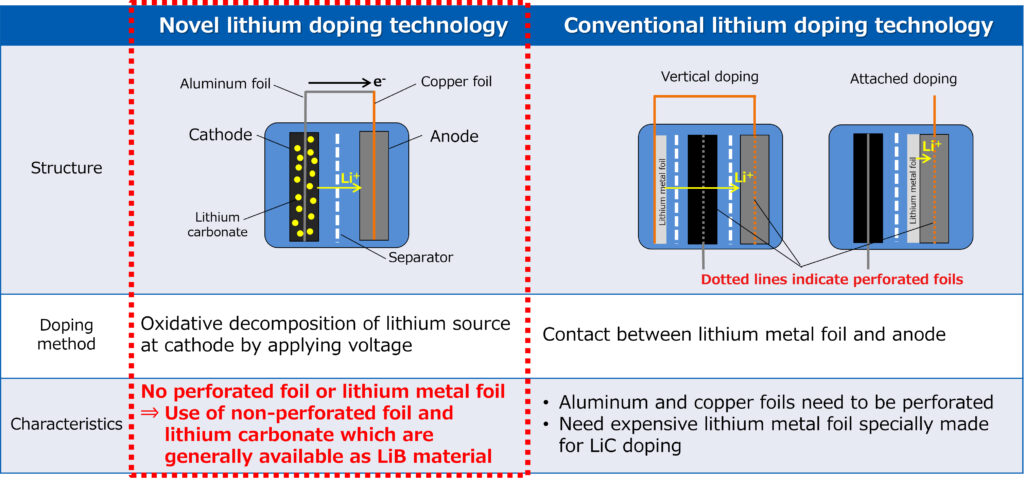ASIA ELECTRONICS INDUSTRYYOUR WINDOW TO SMART MANUFACTURING
Asahi Kasei's New Technique Boosts Li-Ion Capacitor
Asahi Kasei has begun licensing of technology for the design and manufacture of lithium-ion capacitors (LiCs) based on its proprietary lithium pre-doping technology1.
Accordingly, the novel proprietary doping method enables the manufacture of LiCs at lower cost. Particularly, with available materials and equipment used for manufacturing lithium-ion batteries (LiBs). Thus, enabling the design and manufacture of LiCs with increased capacity and improved input/output performance.
The licensing includes not only Asahi Kasei’s intellectual property related to LiC technology, but also technical expertise. It also includes cell design and manufacturing with pilot equipment.
For that reason, Asahi Kasei expects to support licensees around the world to significantly reduce LiC development times. In addition, achieve low-cost LiC manufacture utilizing existing equipment.

Extends Service Life of LiBs
The industry expects demand for energy storage devices to continue rising due to the spread of electric mobility and increased use of renewable energy. The LiC is fast becoming as next-generation energy storage device. It uses the same material as an electric double layer capacitor (EDLC) for the cathode and the same material used as an LiB for the anode.
As LiCs have higher input/output characteristics than LiBs, they suit fields that require instantaneous power. Hence, it is possible to recharge quickly. Also featuring long cycle life and high safety, LiCs are becoming suitable in mobility applications such as electric trams and buses which charge at each stop instead of using power from overhead lines.
In the growing field of energy storage systems (ESS) for renewable energy such as solar and wind, it is possible to extend the service life of LiBs. Particularly, by using LiCs in conjunction to reduce the LiB charge/discharge load. This may reduce both running costs and environmental impact through less frequent replacement of LiBs, generating less waste.

Low-Cost Pre-Doping Method
The conventional LiC manufacturing process requires expensive materials for pre-doping, such as perforated foil and lithium metal foil. Furthermore, as lithium metal is highly reactive and hazardous, additional costs are incurred to maintain a safe working environment.
Asahi Kasei developed a low-cost pre-doping method using inexpensive lithium carbonate as the source of lithium ions. Thus, eliminating the need for expensive materials such as perforated foil and lithium metal foil.
With this novel doping method, lithium carbonate comes in the cathode. Also, performing pre-doping comes at initial charging. Particularly, when nearly all of the lithium carbonate decomposes and lithium ions transfer to the anode.
This not only allows the manufacture of LiCs using materials and equipment similar to those used in the manufacture of LiBs. Furthermore, it also enables capacity and input/output performance to be raised by a factor of 1.3 or more (compared to Asahi Kasei’s conventional LiCs).
Asahi Kasei has already licensed this technology and will continue offering it to other licensees. Moreover, this will support further adoption and application development of the LiC as a next-generation energy storage device. Thus, contributing to the world’s sustainability.
Note:
1 Lithium ions are pre-doped in the anode, keeping the anode potential lower than the electrolytic solution potential, allowing a larger energy density due to improved withstand voltage and increased capacitance of the capacitor itself compared to conventional EDLC.




